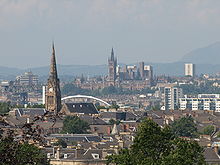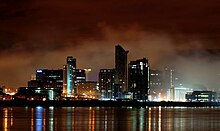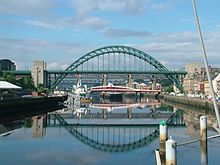The following is a list of the most populous cities and towns in the United Kingdom by city proper. The definition of city in the Cambridge English Dictionary is "a city is a large town or any town that has a cathedral". This, although it is in other countries, is not the case in the United Kingdom. Towns have to be granted city status by the British monarch. There are some cities that were granted city status years ago, and would have no chance of getting it nowadays. Most notably, the Welsh city of St Davids which has a population of just 2,000 but is has city status. Compare that to Reading which has over 150,000 people but is not a city. Therefore, towns also have to be included in order to have an accurate list of the most populous settlements. Contrary to popular belief, London has no city status, it is a conurbation of two other cities, City of London and City of Westminster as well as other boroughs and towns. Despite this, it is still widely considered a city and is probably an exception for the city status.
The List
This list comprises the most populous cities with the population of their city limits. For example, Wolverhampton and West Bromwich are not in the city of Birmingham, but are in the Birmingham Urban Area. It compiles information from the 2011 census as well as 2014 estimates from the National Office of Statistics.
| Rank | City | Image | County | Population | |
|---|---|---|---|---|---|
| 1 | London |  |
Greater London | 8,416,535 | |
| 2 | Birmingham |  |
West Midlands | 1,092,330 | |
| 3 | Glasgow |  |
Greater Glasgow | 801,198 | |
| 4 | Leeds |
 |
West Yorkshire | 750,700 | |
| 5 | Edinburgh |  |
Greater Edinburgh | 595,555 | |
| 6 | Liverpool |  |
Merseyside | 552,267 | |
| 7 | Bristol |  |
Avon | 535,907 | |
| 8 | Sheffield |  |
South Yorkshire | 530,375 | |
| 9 | Bradford |  |
West Yorkshire | 526,369 | |
| 10 | Cardiff |  |
Glamorgan | 521,711 | |
| 11 | Manchester |  |
Greater Manchester | 514,417 | |
| 12 | Leicester |  |
Leicestershire | 443,760 | |
| 13 | Stoke |  |
Staffordshire | 427,529 | |
| 14 | Hull |  |
East Yorkshire | 385,786 | |
| 15 | Wakefield |  |
West Yorkshire | 328,708 | |
| 16 | Coventry |  |
West Midlands | 325,949 | |
| 17 | Nottingham |  |
Nottinghamshire | 315,862 | |
| 18 | Belfast |  |
County Antrim | 295,223 | |
| 19 | Plymouth |  |
Devon | 286,732 | |
| 20 | Newcastle |  |
Tyne and Wear | 282,442 |
London's city status
As mentioned in the first paragraph, the area commonly referred to as London isn't officially a city, despite the fact that it is globally recognized as a city. As there are two incorporated cities within London, City of London and City of Westminster it is possible to make a list with Birmingham at the top. If so, City of London and Westminster would not be on the top 20 list.
This is just one of many oddly organised georgraphic regions in the UK. Others include how Manchester can be considered within the county of Greater Manchester or Lancashire. Many have called for new clear markings of cities in the UK as well as scrapping the Royal charter and making any settlement above a certain population officially a city.
See also
United Kingdom
County town
List of metropolitan areas in the United Kingdom
City region (United Kingdom)
The following is a list of the most populous cities and towns in the United Kingdom by city proper. The definition of city in the Cambridge English Dictionary is "a city is a large town or any town that has a cathedral". This, although it is in other countries, is not the case in the United Kingdom. Towns have to be granted city status by the British monarch. There are some cities that were granted city status years ago, and would have no chance of getting it nowadays. Most notably, the Welsh city of St Davids which has a population of just 2,000 but is has city status. Compare that to Reading which has over 150,000 people but is not a city. Therefore, towns also have to be included in order to have an accurate list of the most populous settlements. Contrary to popular belief, London has no city status, it is a conurbation of two other cities, City of London and City of Westminster as well as other boroughs and towns. Despite this, it is still widely considered a city and is probably an exception for the city status.
The List
This list comprises the most populous cities with the population of their city limits. For example, Wolverhampton and West Bromwich are not in the city of Birmingham, but are in the Birmingham Urban Area. It compiles information from the 2011 census as well as 2014 estimates from the National Office of Statistics.
| Rank | City | Image | County | Population | |
|---|---|---|---|---|---|
| 1 | London |  |
Greater London | 8,416,535 | |
| 2 | Birmingham |  |
West Midlands | 1,092,330 | |
| 3 | Glasgow |  |
Greater Glasgow | 801,198 | |
| 4 | Leeds |
 |
West Yorkshire | 750,700 | |
| 5 | Edinburgh |  |
Greater Edinburgh | 595,555 | |
| 6 | Liverpool |  |
Merseyside | 552,267 | |
| 7 | Bristol |  |
Avon | 535,907 | |
| 8 | Sheffield |  |
South Yorkshire | 530,375 | |
| 9 | Bradford |  |
West Yorkshire | 526,369 | |
| 10 | Cardiff |  |
Glamorgan | 521,711 | |
| 11 | Manchester |  |
Greater Manchester | 514,417 | |
| 12 | Leicester |  |
Leicestershire | 443,760 | |
| 13 | Stoke |  |
Staffordshire | 427,529 | |
| 14 | Hull |  |
East Yorkshire | 385,786 | |
| 15 | Wakefield |  |
West Yorkshire | 328,708 | |
| 16 | Coventry |  |
West Midlands | 325,949 | |
| 17 | Nottingham |  |
Nottinghamshire | 315,862 | |
| 18 | Belfast |  |
County Antrim | 295,223 | |
| 19 | Plymouth |  |
Devon | 286,732 | |
| 20 | Newcastle |  |
Tyne and Wear | 282,442 |
London's city status
As mentioned in the first paragraph, the area commonly referred to as London isn't officially a city, despite the fact that it is globally recognized as a city. As there are two incorporated cities within London, City of London and City of Westminster it is possible to make a list with Birmingham at the top. If so, City of London and Westminster would not be on the top 20 list.
This is just one of many oddly organised georgraphic regions in the UK. Others include how Manchester can be considered within the county of Greater Manchester or Lancashire. Many have called for new clear markings of cities in the UK as well as scrapping the Royal charter and making any settlement above a certain population officially a city.
See also
United Kingdom
County town
List of metropolitan areas in the United Kingdom
City region (United Kingdom)